Essential Fibre Prep Tools & Accessories
Fibre prep can be a hobby in itself. You can find beautiful braids of hand-dyed combed top, but what if you want to change that hand-dyed braid into a batt? Or, what if you purchased raw fleece that needs washing and combing?
While this is not a detailed how-to guide, here we will list some of the most commonly used items in fibre prep. Also, we will link to helpful resources throughout this post, and at the bottom, you’ll find a Quick-Reference Checklist PDF you can use to keep track of what you have, need, and want!
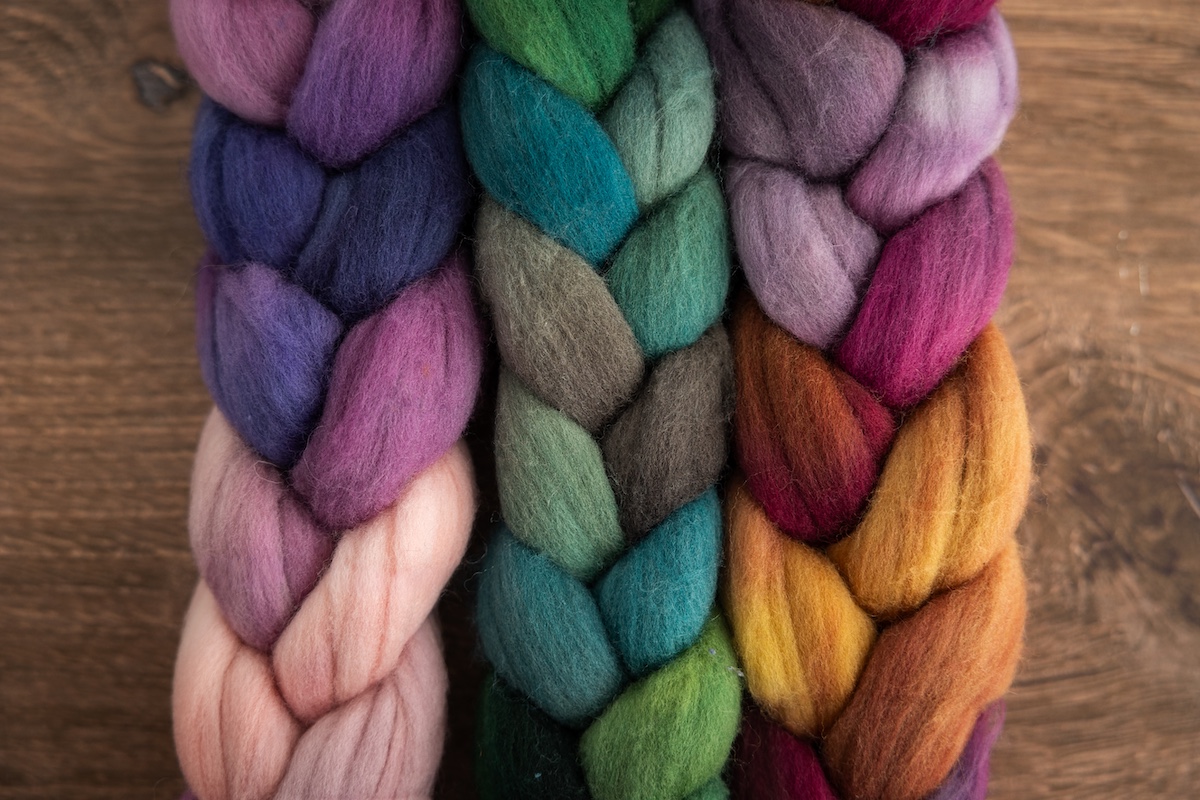
Scouring Raw Fleece
Maybe you picked up raw fleece at a fibre festival or directly from a farmer. Now it needs cleaning. While we will not go into details here, we recommend having dedicated tools and work areas for this process, rather than using your kitchen. This helps keep everything safe for you, your family, and your plumbing.
Pails or buckets
Scouring in pails keeps raw fleece out of your sinks and away from food areas. This prevents cross-contamination with items you use every day.
Soap
You could use wool wash, but many prefer stronger cleaners such as Orvus paste, Unicorn Power Scour, or even eco-friendly, scent-free dish soap. Save gentle detergents like Soak for after the wool has been dyed, spun, or made into fabric.
Thermometer
When soaking your fleece, it is helpful to know the temperature of your water to prevent felting of the wool and to ensure proper removal of lanolin.
Gloves and apron
Protect yourself with gloves and an apron. You do not want dirty water splashing back at you.
Drying rack
Good ventilation is key for drying wool naturally. You could use a large rack, a mesh bag, or even a spice rack. Laying the fibre on a towel works too, but rotate it often to help it dry evenly.

Fibre Prep Tools
From freshly scoured fleece to altering a hand-dyed braid, changing the fibre prep can be as simple as using your hands. For more refined results, the right tools can make the job easier.
Wool picker
Some people use a wool picker to break up locks. Its sharp nails pull the wool apart quickly and help loosen matted fibre.
Flick carder or lock pop
Opening locks with a flick carder or Lock Pop before carding or combing makes the process easier and gives smoother results.
Hand cards
Hand cards are great for creating woollen-style preps. Moving the fibre back and forth blends fibres and introduces air. They are generally used for fibres around 4 inches or shorter.
Blending board
A blending board is similar to a hand card but larger. Since there is only one board, you need to manually remove and replace the fibre to achieve results. It holds more fibre than hand cards and is often used to blend colours or fibres into rolags or batts.
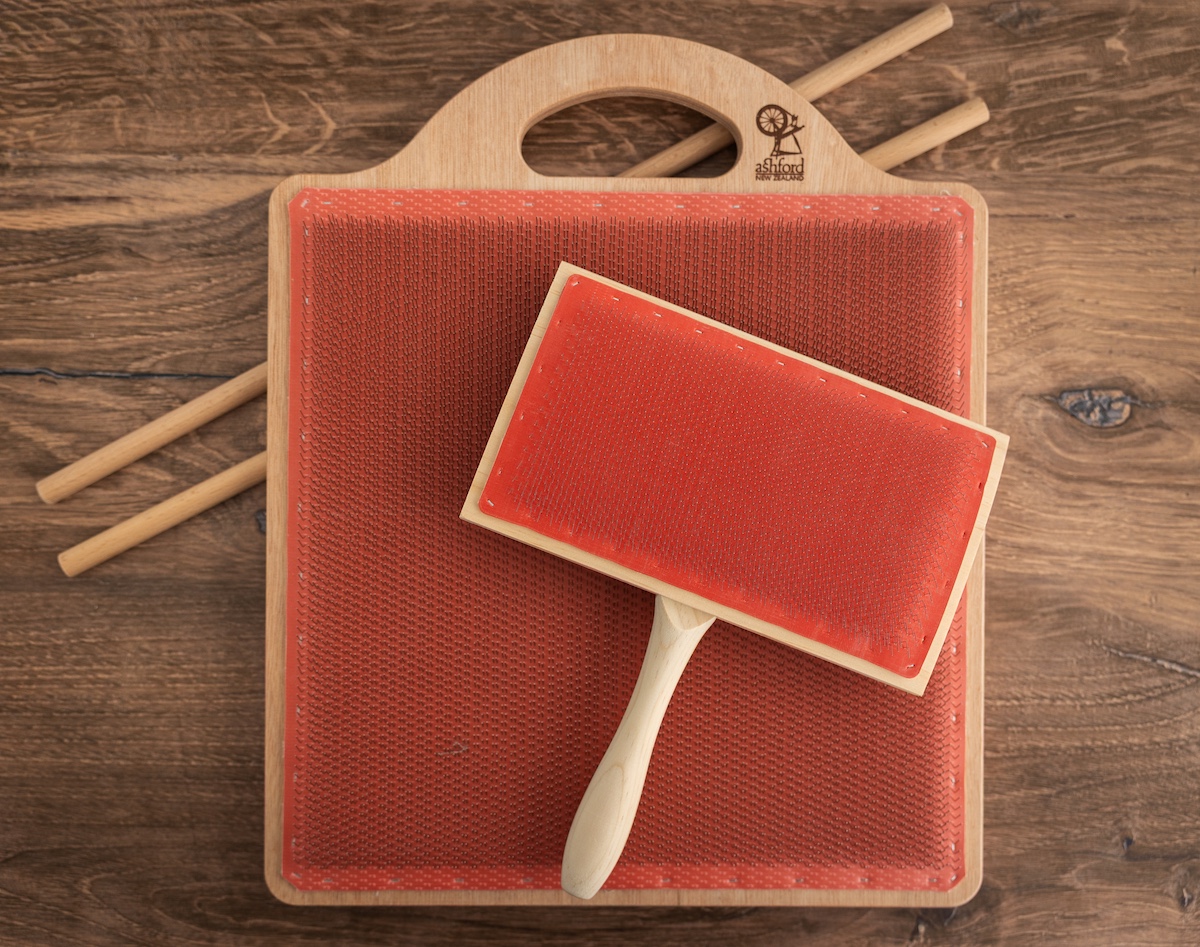
Drum carder
A drum carder is a larger tool for carding fibre into batts. It uses a hand crank to feed fibre into the drum, making the work easier. Drum carders can be expensive, but for those who enjoy fibre prep, they are worth considering.
Wool combs
If your goal is worsted yarn, wool combs are the tool of choice. Used with fibre longer than 4 inches, they align locks tip to butt, and separate shorter fibres for a more consistent result. They do produce more waste, but give a smoother preparation.
Hackles
Hackles are similar to large wool combs but usually have only two rows of tines. They are often used for blending colours in a worsted preparation, much like a blending board but with a different effect.
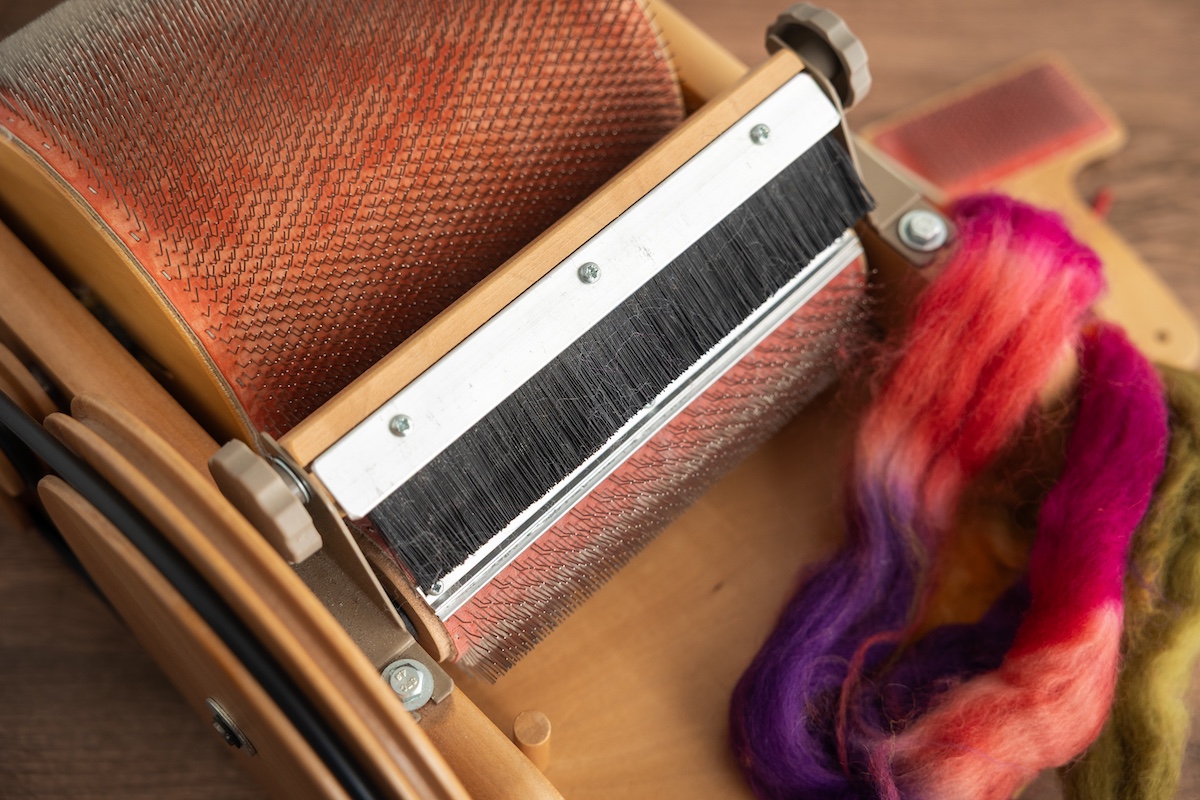
Extra Fibre Prep Accessories
Diz
A diz helps you pull fibre into roving or strips of a controlled thickness. You can use a large button, the top of a spice jar, or a specially made diz with different hole sizes.
Dowels
Dowels are useful when making rolags, letting you control the size and the tightness of the rolags.
Brushes
Different styles of brushes can be used on carded batts to create different effects, whether you are tapping fibre down or brushing it across.
Water Mister
Fibre can become ‘fly-away’ and hard to manage. A light mist with water or a water and oil/conditioner solution can help!
Scale
Whether you are weighing fibre for scouring or dividing it up for blending, having a scale to measure the amount of fibre is useful to know how much you are working with.
Pen & Paper
Always important to know and record each step for repeating results!
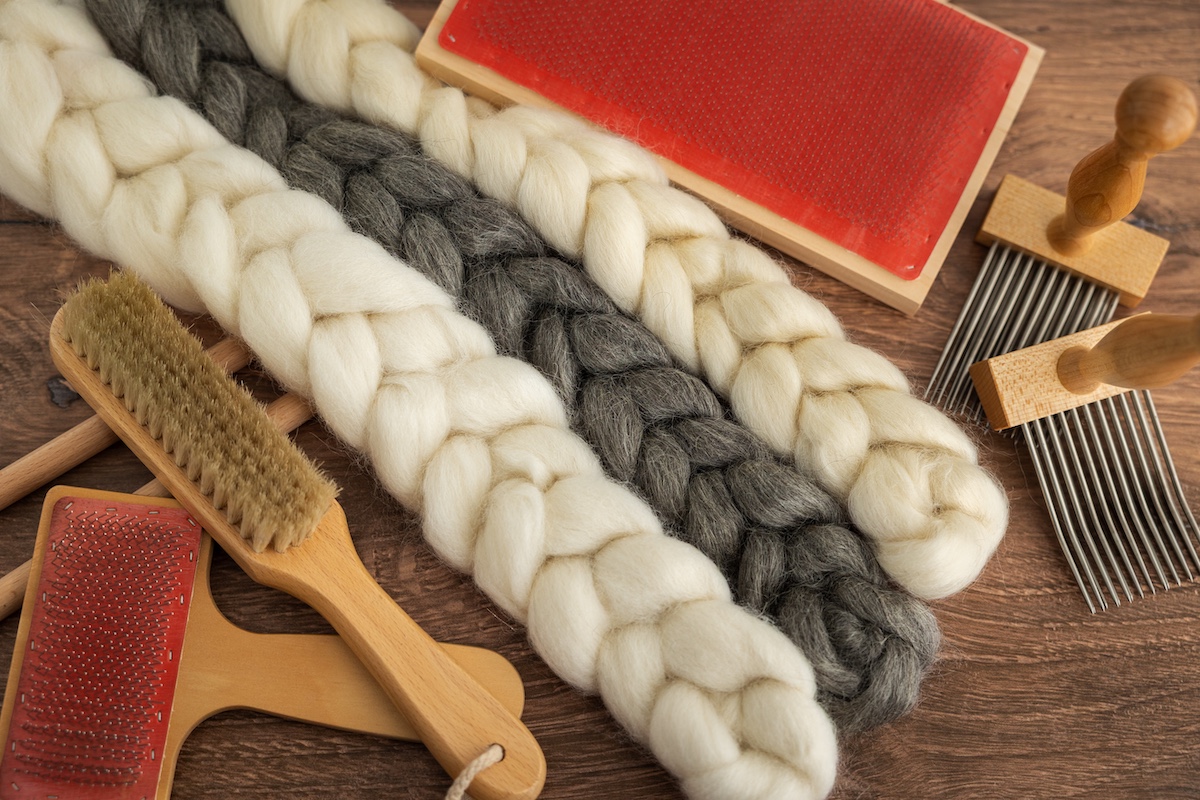
Maintenance Tools
Keeping your fibre prep tools in good condition makes them last longer and perform better.
Oil
Many drum carders need regular oiling. Check your tool’s manual for instructions, as each model is different. Some need oil in several places, while others require none.
Cleaning brushes
Remove excess fibre from joints to prevent buildup, especially in motorized equipment like electric drum carders. A flick carder works well for cleaning hand cards, blending boards, and drum carders. You can also use a hairbrush cleaning tool.
Wood care (beeswax, polish)
Wooden handles and casings can dry out or splinter over time. Light sanding and a fresh coat of beeswax, polish, or varnish will restore them. Check your manual for specific care instructions, and if uncertain, contact the manufacturer.
Final Thoughts
This is a quick overview of some of the most popular tools used in fibre prep. If you are also a spinner, we have a separate post, Essential Spinning Tools & Accessories, that you may find helpful.
Courses to Help On Your Journey
At the School of SweetGeorgia, we have over 100 courses to help you on your fibre arts adventures. From knitting, spinning, crocheting, weaving, dyeing, and more, we are here to help. Here is a list of some of our current fibre-prep courses:
- Carding for Colour
- Colour & Fibre Play
- Colour & Fibre Play II
- Working from Fleece
- Nuances to Spinning Better Yarns
- Blending Boards: From Rolags to Roving

Join Our Community!
- At the School of SweetGeorgia, we’ve built a vibrant and welcoming community of fibre-loving makers, passionate instructors, and dedicated staff. Whether you’re looking for guidance on a new technique or just need a little creative encouragement, we’re here to support you every step of the way.
- Not yet a member of the School? We invite you to come and see what it is all about! Use the code: EXPLORETHESCHOOL to save 15% on an All-Access monthly membership!
- We welcome you to join us in our SweetGeorgia Community. This is where we share projects that inspire, have fibre-filled conversations, host make-alongs, and participate in a variety of virtual meetings! We discuss all things knitting, crocheting, spinning, weaving, machine knitting, and more!
- Want to stay in the loop? Subscribe to our newsletter! It’s a simple way to stay updated on what’s new at SweetGeorgia and the School of SweetGeorgia, catch up on the latest articles, watch new SweetGeorgia YouTube videos, and be a part of our community without any pressure to post. We value your presence, no matter how you choose to connect with us!
Let us know what your favourite spinning tools are. We are always excited to talk about fibre-prep tools!
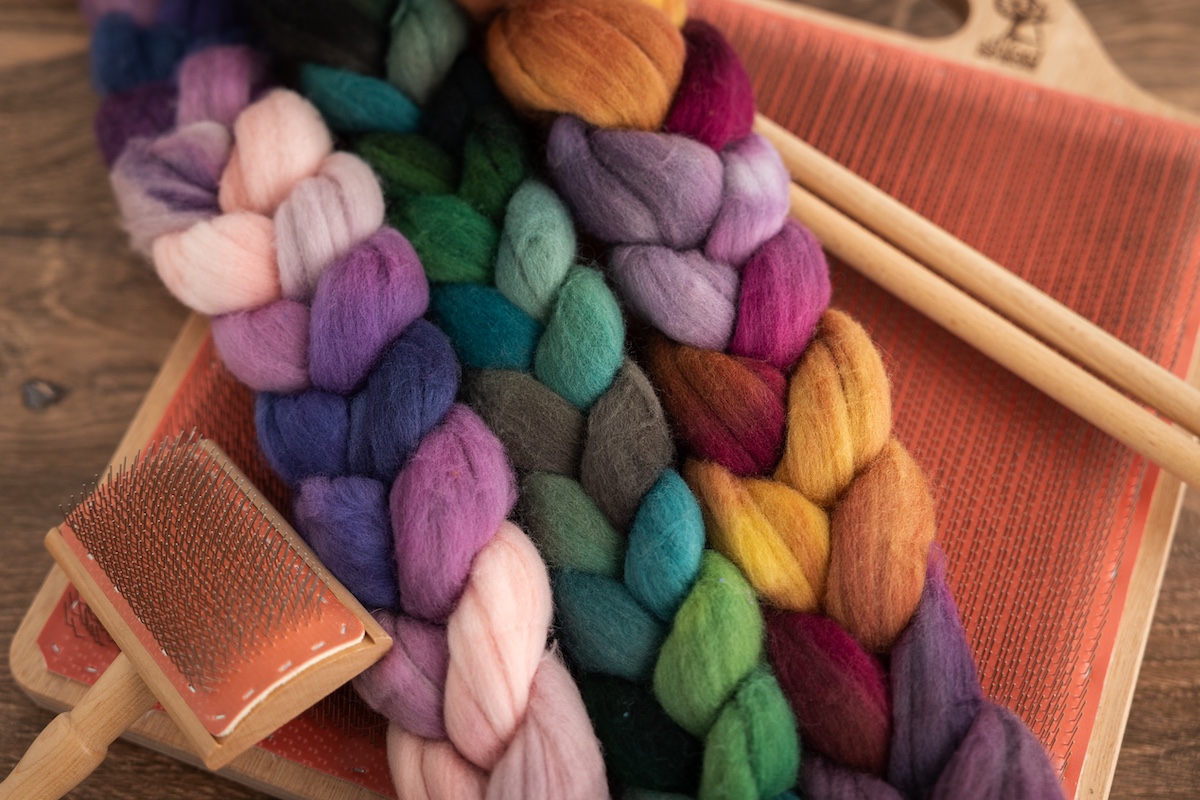
Checklist
Here is a quick checklist you can use to see what you have, need, and want!
The post Essential Fibre Prep Tools & Accessories appeared first on SweetGeorgia Yarns.
Comments
Post a Comment